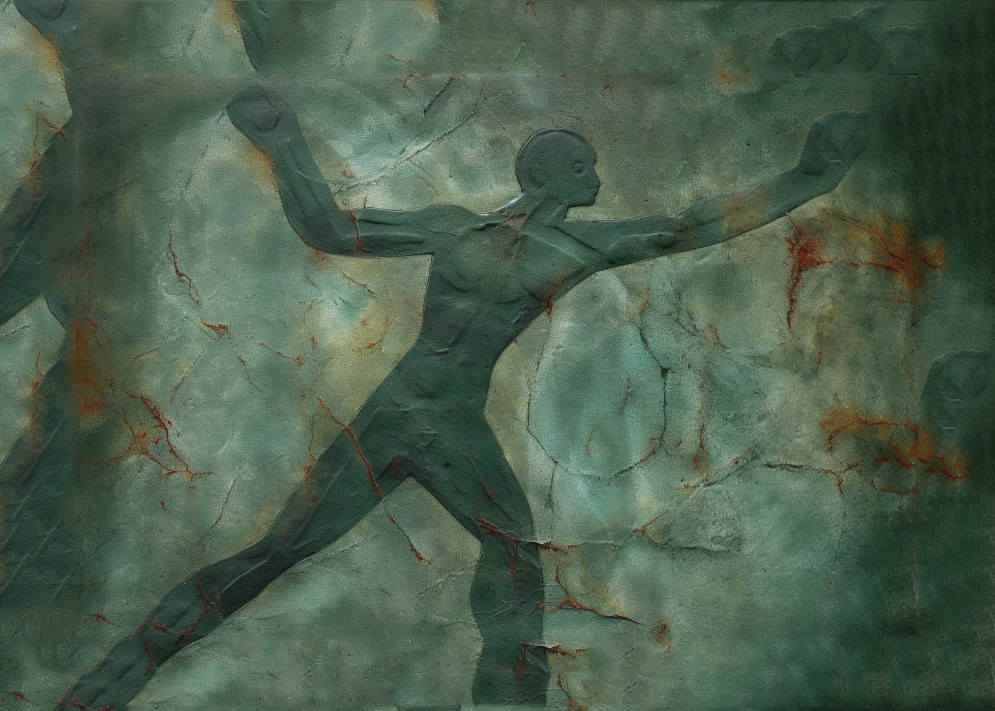You can find a PDF of this lesson plan here.
Lesson Overview
Featured article: Centers Progress, Pt. 6: Chichen Itza (Team Sports) by Chelsea Follett
In this article, Follett writes, “The development of team sports was a significant cultural achievement. Sports have transformed the way that people spend their leisure time by being one of the most universally loved forms of entertainment. To many people, team sports fulfill deeper psychological functions, such as providing an additional sense of meaning in their lives.”
In this lesson, you will learn about Chichen Itza—a sprawling ruined city in the Yucatán Peninsula in modern Mexico—and the oldest continuously played ball sport in the world variously called Pok-A-Tok, Ulama, or simply, the Ball Game.
Warm-up
Watch this video about the revival of a version of the Mesoamerican Ball Game. After watching, in partners, small groups, or as a whole class, answer these questions:
- What are some unique aspects of this ball game?
- Why isn’t this game more widely played now? Which huge change occurred in Mesoamerica that outlawed this game several centuries ago?
- What are these players’ larger goals for the revival of the game? In other words, what legacy do they want to pass on to their descendants and to Mexican culture?
What do you know about Chichen Itza? Watch this video to build background knowledge about this UNESCO World Heritage site.
After watching, in partners, small groups, or as a whole class, answer these questions:
- What is the significance of the four sets of 91 steps leading to the top of the pyramid and the additional step on the pyramid’s top?
- What happens at the stone step pyramid Kukulkan on the spring and autumn equinoxes?
- What do the construction and placement of monumental architecture at Chichen Itza tell us about the sophistication of Mayan civilization?
Questions for reading, writing, and discussion
Read the article, then answer the following questions:
- Follett writes, “Sports are among humanity’s oldest innovations.” Why do people play sports? What social and/or cultural functions do team sports like the Mesoamerican Ball Game have in society?
- Which three achievements make the Maya stand apart from all other pre-Columbian civilizations?
- What extant evidence do we have of Toltec influence on Mayan culture?
- What role did human sacrifice have in Mayan society?
- Describe the economy of Chichen Itza. What was the basis of the economy?
- What role did the Mesoamerican Ball Game have in the life of Mayan city-states like Chichen Itza?
Extension Activity/Homework
Play the Mesoamerican Ball Game
Watch this video on how to play the Mesoamerican Ball Game, also known as Pok-A-Tok. After watching, play the game!
- Go to a basketball court with your classmates. Bring a foam ball, two hula hoops, and several cones (optional).
- Use the cones to mark the boundary of your ball court. If there are already markings, you can use those instead.
- Secure the hula hoops at either end of the court at about head height. The hoop’s opening should be vertical (not horizontal like a basketball hoop).
- Form two teams of 4–6 players. Teams face each other.
- The referee says, “Pok-A-Tok,” and the game begins.
Rules:
- The ball is hit into the field of play.
- Players can pass the ball to each other using only their elbows, knees, and hips; hands, heads, and feet are not allowed.
- A point is scored when the opposing team fails to return the ball before it bounces a second time or when the ball reaches the opposing end zone.
- The game finishes when a player from one team gets the ball through the hoop at the opposite end of the court or when time runs out (together, you may decide the length of each game).
Profile a Pre-Columbian Civilization
Create a PowerPoint or Google Slides presentation about one pre-Columbian American civilization. Choose one of the following:
- Olmec
- Maya
- Aztec
- Inca
- Mississippian
- Pueblo
Before making your presentation, do research using reliable sources and take notes in the chart below. You must use your own words.
| Slide | The ____ Civilization |
| Introduction One-paragraph summary about the civilization | |
| Society Population, social structure (classes) | |
| Politics Powerholders, governmental structure, role of military | |
| Interactions with the environment Resource use, geographical location and extant | |
| Culture Religion(s), artifacts, writing systems, pastimes | |
| Economy Economic system, trading partners | |
| Technology Architecture, canals, irrigation, roads | |
| Works Cited Cite sources using APA format |
When you’ve gathered the necessary information, create your presentation using the categories above. Your presentation must have at least eight slides, and they must include visuals such as maps, photos, graphs, or artwork. Be as detailed and creative as you like.
Write an Essay on Sports and War
In the article, Follett writes:
The Ball Game occasionally served as a substitute for war, with rival political leaders in the later Aztec civilization purportedly agreeing to confront each other on a ball court rather than on a battlefield. In fact, some psychologists believe that sports today help human beings to channel their competitive and aggressive impulses away from violence, and that athletic competitions are intertwined with the decline of overt conflict between states.
What do you think? Do you think the decline in interstate warfare over the past 75 years is partly the result of the increase in the popularity of sports? Why or why not? Write an essay in which you take a stand on this question. Support your thesis with evidence (you may use this article, also linked above). In your essay, be sure to present and refute at least one counterargument.

